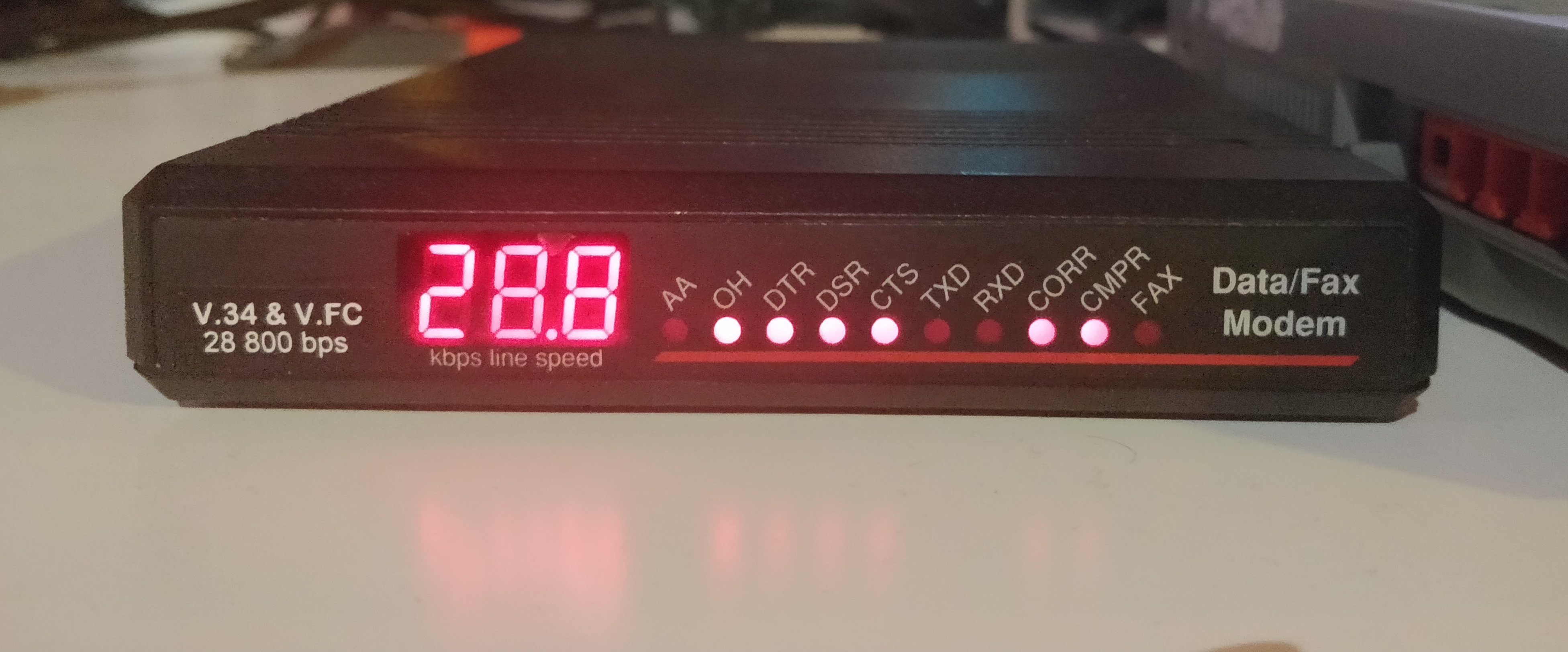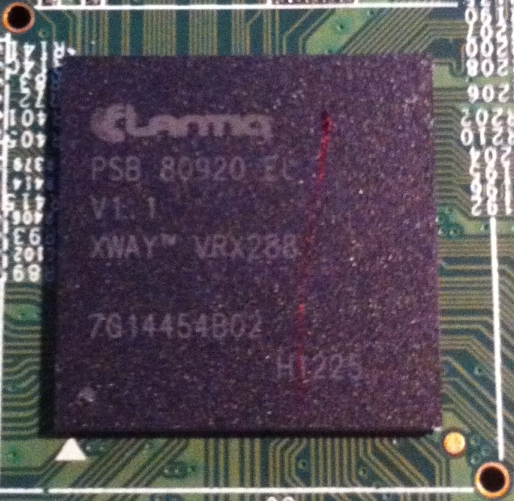|
Dialup
Dial-up Internet access is a form of Internet access that uses the facilities of the public switched telephone network (PSTN) to establish a connection to an Internet service provider (ISP) by dialing a telephone number on a conventional telephone line. Dial-up connections use modems to decode audio signals into data to send to a router or computer, and to encode signals from the latter two devices to send to another modem. History In 1979, Tom Truscott and Jim Ellis, graduates of Duke University, created an early predecessor to dial-up Internet access called the USENET. The USENET was a UNIX based system that used a dial-up connection to transfer data through telephone modems. Dial-up Internet has been around since the 1980s via public providers such as NSFNET-linked universities. The BBC established Internet access via Brunel University in the United Kingdom in 1989. Dial-up was first offered commercially in 1992 by Pipex in the United Kingdom and Sprint in the United St ... [...More Info...] [...Related Items...] OR: [Wikipedia] [Google] [Baidu] |
Modem
A modulator-demodulator or modem is a computer hardware device that converts data from a digital format into a format suitable for an analog transmission medium such as telephone or radio. A modem transmits data by modulating one or more carrier wave signals to encode digital information, while the receiver demodulates the signal to recreate the original digital information. The goal is to produce a signal that can be transmitted easily and decoded reliably. Modems can be used with almost any means of transmitting analog signals, from light-emitting diodes to radio. Early modems were devices that used audible sounds suitable for transmission over traditional telephone systems and leased lines. These generally operated at 110 or 300 bits per second (bit/s), and the connection between devices was normally manual, using an attached telephone handset. By the 1970s, higher speeds of 1,200 and 2,400 bit/s for asynchronous dial connections, 4,800 bit/s for synch ... [...More Info...] [...Related Items...] OR: [Wikipedia] [Google] [Baidu] |
Internet Service Provider
An Internet service provider (ISP) is an organization that provides services for accessing, using, or participating in the Internet. ISPs can be organized in various forms, such as commercial, community-owned, non-profit, or otherwise privately owned. Internet services typically provided by ISPs can include Internet access, Transit (Internet), Internet transit, domain name registration, Web hosting service, web hosting, Usenet service, and colocation centre, colocation. An ISP typically serves as the access point or the Default gateway, gateway that provides a user access to everything available on the Internet. Such a network can also be called as an eyeball network. History The Internet (originally ARPAnet) was developed as a network between government research laboratories and participating departments of universities. Other companies and organizations joined by direct connection to the Internet backbone, backbone, or by arrangements through other connected companies, so ... [...More Info...] [...Related Items...] OR: [Wikipedia] [Google] [Baidu] |
V34 Modem
V34, or similar, may refer to: * Brazilian corvette ''Barroso'' (V34) * Fokker V.34 The Fokker D.VII was a German World War I fighter aircraft designed by Reinhold Platz of the Fokker-Flugzeugwerke. Germany produced around 3,300 D.VII aircraft in the second half of 1918. In service with the ''Luftstreitkräfte'', the D.VII quic ..., a German prototype fighter aircraft of World War I * V.34, a telecommunications recommendation of the ITU-T {{Letter-NumberCombDisambig ... [...More Info...] [...Related Items...] OR: [Wikipedia] [Google] [Baidu] |
Broadband
In telecommunications, broadband is wide bandwidth data transmission which transports multiple signals at a wide range of frequencies and Internet traffic types, that enables messages to be sent simultaneously, used in fast internet connections. The medium can be coaxial cable, optical fiber, wireless Internet (radio), twisted pair or satellite. In the context of Internet access, broadband is used to mean any high-speed Internet access that is always on and faster than dial-up access over traditional analog or ISDN PSTN services. Overview Different criteria for "broad" have been applied in different contexts and at different times. Its origin is in physics, acoustics, and radio systems engineering, where it had been used with a meaning similar to " wideband", or in the context of audio noise reduction systems, where it indicated a single-band rather than a multiple-audio-band system design of the compander. Later, with the advent of digital telecommunications, the term was ... [...More Info...] [...Related Items...] OR: [Wikipedia] [Google] [Baidu] |
Mobile Broadband
Mobile broadband is the marketing term for Wireless broadband, wireless Internet access via mobile networks. Access to the network can be made through a portable modem, wireless modem, or a Tablet computer, tablet/smartphone (possibly Tethering, tethered) or other mobile device. The first wireless Internet access became available in 1991 as part of the second generation (2G) of mobile phone technology. Higher speeds became available in 2001 and 2006 as part of the third (3G) and fourth (4G) generations. In 2011, 90% of the world's population lived in areas with 2G coverage, while 45% lived in areas with 2G and 3G coverage."The World in 2011: ITC Facts and Figures" International Telecommunication Union (ITU), Geneva, 2011 Mobile broadband uses the spectrum of 225 MHz to 3700 ... [...More Info...] [...Related Items...] OR: [Wikipedia] [Google] [Baidu] |
Wireless Broadband
Wireless broadband is telecommunications technology that provides high-speed wireless Internet access or computer networking access over a wide area. The term comprises both fixed and mobile broadband. The term broadband Originally the word "broadband" had a technical meaning, but became a marketing term for any kind of relatively high-speed computer network or Internet access technology. According to the 802.16-2004 standard, broadband means "having instantaneous bandwidths greater than 1 MHz and supporting data rates greater than about 1.5 Mbit/s." The Federal Communications Commission (FCC) recently re-defined the definition to mean download speeds of at least 25 Mbit/s and upload speeds of at least 3 Mbit/s. Technology and speeds A wireless broadband network is an outdoor fixed and/or mobile wireless network providing point-to-multipoint or point-to-point terrestrial wireless links for broadband services. Wireless networks can feature data rates exceeding 1 Gbit ... [...More Info...] [...Related Items...] OR: [Wikipedia] [Google] [Baidu] |
Digital Subscriber Line
Digital subscriber line (DSL; originally digital subscriber loop) is a family of technologies that are used to transmit digital data over telephone lines. In telecommunications marketing, the term DSL is widely understood to mean asymmetric digital subscriber line (ADSL), the most commonly installed DSL technology, for Internet access. DSL service can be delivered simultaneously with wired telephone service on the same telephone line since DSL uses higher frequency bands for data. On the customer premises, a DSL filter on each non-DSL outlet blocks any high-frequency interference to enable simultaneous use of the voice and DSL services. The bit rate of consumer DSL services typically ranges from 256 kbit/s to over 100 Mbit/s in the direction to the customer ( downstream), depending on DSL technology, line conditions, and service-level implementation. Bit rates of 1 Gbit/s have been reached. In ADSL, the data throughput in the upstream direction (the dire ... [...More Info...] [...Related Items...] OR: [Wikipedia] [Google] [Baidu] |
Cable Internet Access
In telecommunications, cable Internet access, shortened to cable Internet, is a form of broadband Internet access which uses the same infrastructure as a cable television. Like digital subscriber line and fiber to the premises services, cable Internet access provides network edge connectivity (last mile access) from the Internet service provider to an end user. It is integrated into the cable television infrastructure analogously to DSL which uses the existing telephone network. Cable TV networks and telecommunications networks are the two predominant forms of residential Internet access. Recently, both have seen increased competition from fiber deployments, wireless, and mobile networks. Hardware and bit rates Broadband cable Internet access requires a cable modem at the customer's premises and a cable modem termination system (CMTS) at a cable operator facility, typically a cable television headend. The two are connected via coaxial cable or a hybrid fibre-coaxial (HFC) p ... [...More Info...] [...Related Items...] OR: [Wikipedia] [Google] [Baidu] |
Canadian Radio-television And Telecommunications Commission
The Canadian Radio-television and Telecommunications Commission (CRTC; french: Conseil de la radiodiffusion et des télécommunications canadiennes, links=) is a public organization in Canada with mandate as a regulatory agency for broadcasting and telecommunications. It was created in 1976 when it took over responsibility for regulating telecommunication carriers. Prior to 1976, it was known as the Canadian Radio and Television Commission, which was established in 1968 by the Parliament of Canada to replace the Board of Broadcast Governors. Its headquarters is located in the Central Building (Édifice central) of Les Terrasses de la Chaudière in Gatineau, Quebec. History The CRTC was originally known as the Canadian Radio-Television Commission. In 1976, jurisdiction over telecommunications services, most of which were then delivered by monopoly common carriers (for example, telephone companies), was transferred to it from the Canadian Transport Commission although the ab ... [...More Info...] [...Related Items...] OR: [Wikipedia] [Google] [Baidu] |
Fox News Channel
The Fox News Channel, abbreviated FNC, commonly known as Fox News, and stylized in all caps, is an American multinational conservative cable news television channel based in New York City. It is owned by Fox News Media, which itself is owned by the Fox Corporation. The channel broadcasts primarily from studios at 1211 Avenue of the Americas in Midtown Manhattan. Fox News provides service to 86 countries and overseas territories worldwide, with international broadcasts featuring Fox Extra segments during ad breaks. The channel was created by Australian-American media mogul Rupert Murdoch in 1996 to appeal to a conservative audience, hiring former Republican media consultant and CNBC executive Roger Ailes as its founding CEO. It launched on October 7, 1996, to 17 million cable subscribers. Fox News grew during the late 1990s and 2000s to become the dominant United States cable news subscription network. , approximately 87,118,000 U.S. households (90.8% of televisi ... [...More Info...] [...Related Items...] OR: [Wikipedia] [Google] [Baidu] |
Pew Research Center
The Pew Research Center is a nonpartisan American think tank (referring to itself as a "fact tank") based in Washington, D.C. It provides information on social issues, public opinion, and demographic trends shaping the United States and the world. It also conducts public opinion polling, demographic research, random sample survey research and panel based surveys, media content analysis, and other empirical social science research. The Pew Research Center does not take policy positions, and is a subsidiary A subsidiary, subsidiary company or daughter company is a company owned or controlled by another company, which is called the parent company or holding company. Two or more subsidiaries that either belong to the same parent company or having a sam ... of The Pew Charitable Trusts. History In 1990, the Times Mirror Company founded the Times Mirror Center for the People & the Press as a research project, tasked with conducting polls on politics and policy. Andrew Kohut ... [...More Info...] [...Related Items...] OR: [Wikipedia] [Google] [Baidu] |
Rural Internet
Rural Internet describes the characteristics of Internet service in rural areas (also referred to as "the country" or "countryside"), which are settled places outside towns and cities. Inhabitants live in villages, hamlets, on farms and in other isolated houses. Mountains and other terrain can impede rural Internet access. Internet service in many rural areas is provided over voiceband by 56k modem. Poor-quality telephone lines, many of which were installed or last upgraded between the 1930s and the 1960s, often limit the speed of the network to bit rates of 26kbit/s or less. Since many of these lines serve relatively few customers, phone company maintenance and speed of repair of these lines has degraded and their upgrade for modern quality requirements is unlikely. This results in a digital divide. High-speed, wireless Internet service is becoming increasingly common in rural areas. Here, service providers deliver Internet service over radio-frequency via special radio-equ ... [...More Info...] [...Related Items...] OR: [Wikipedia] [Google] [Baidu] |





